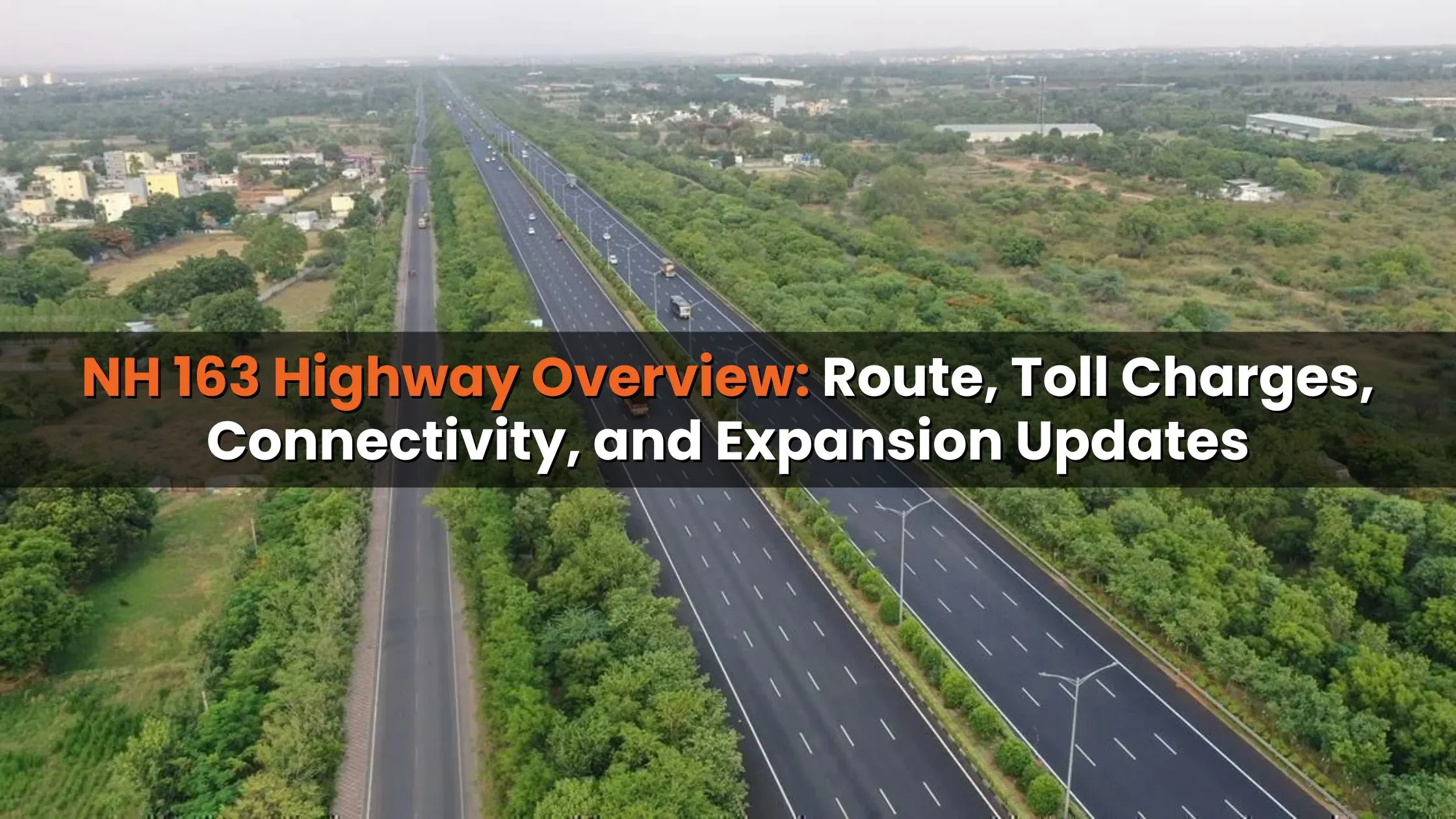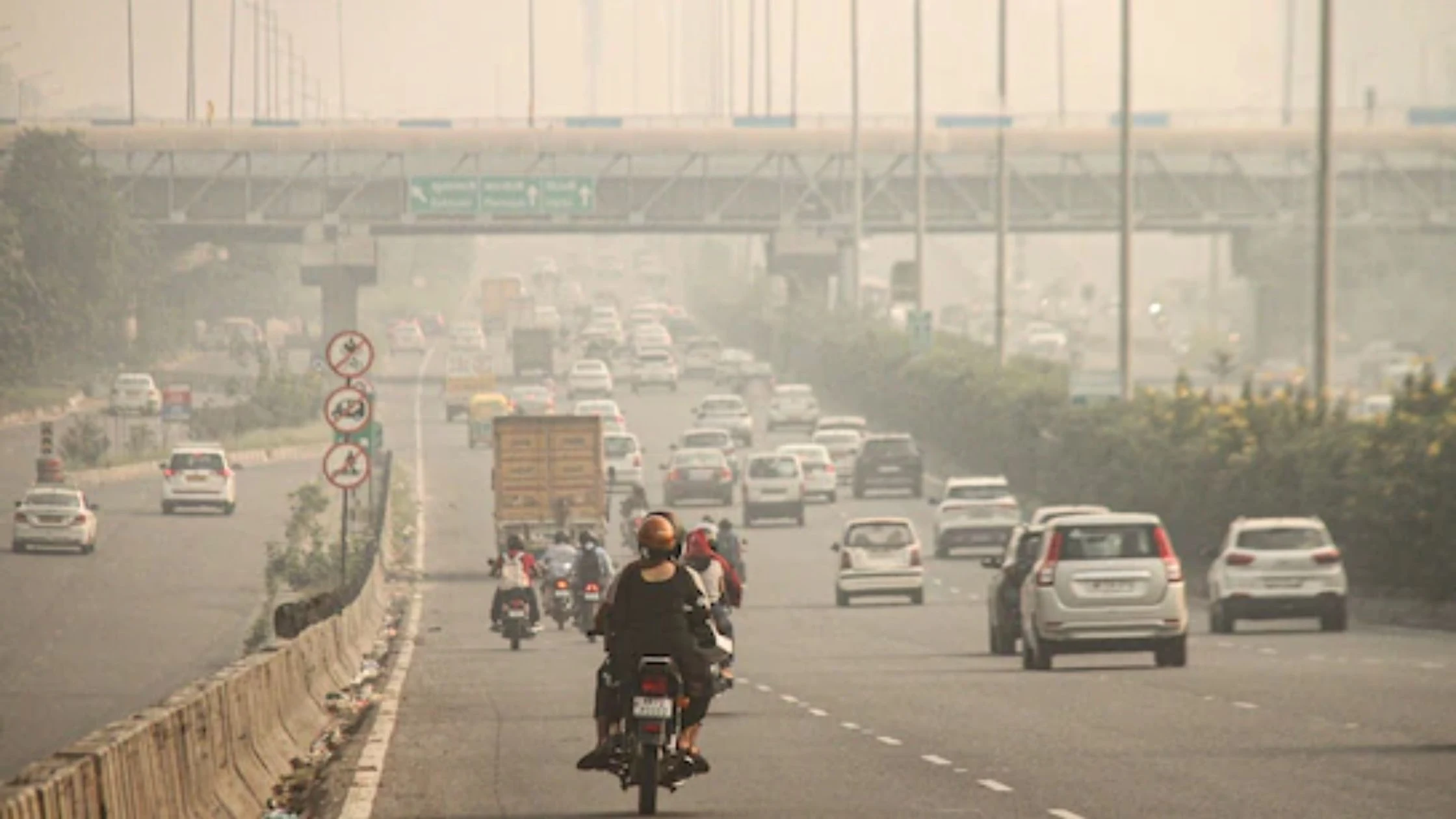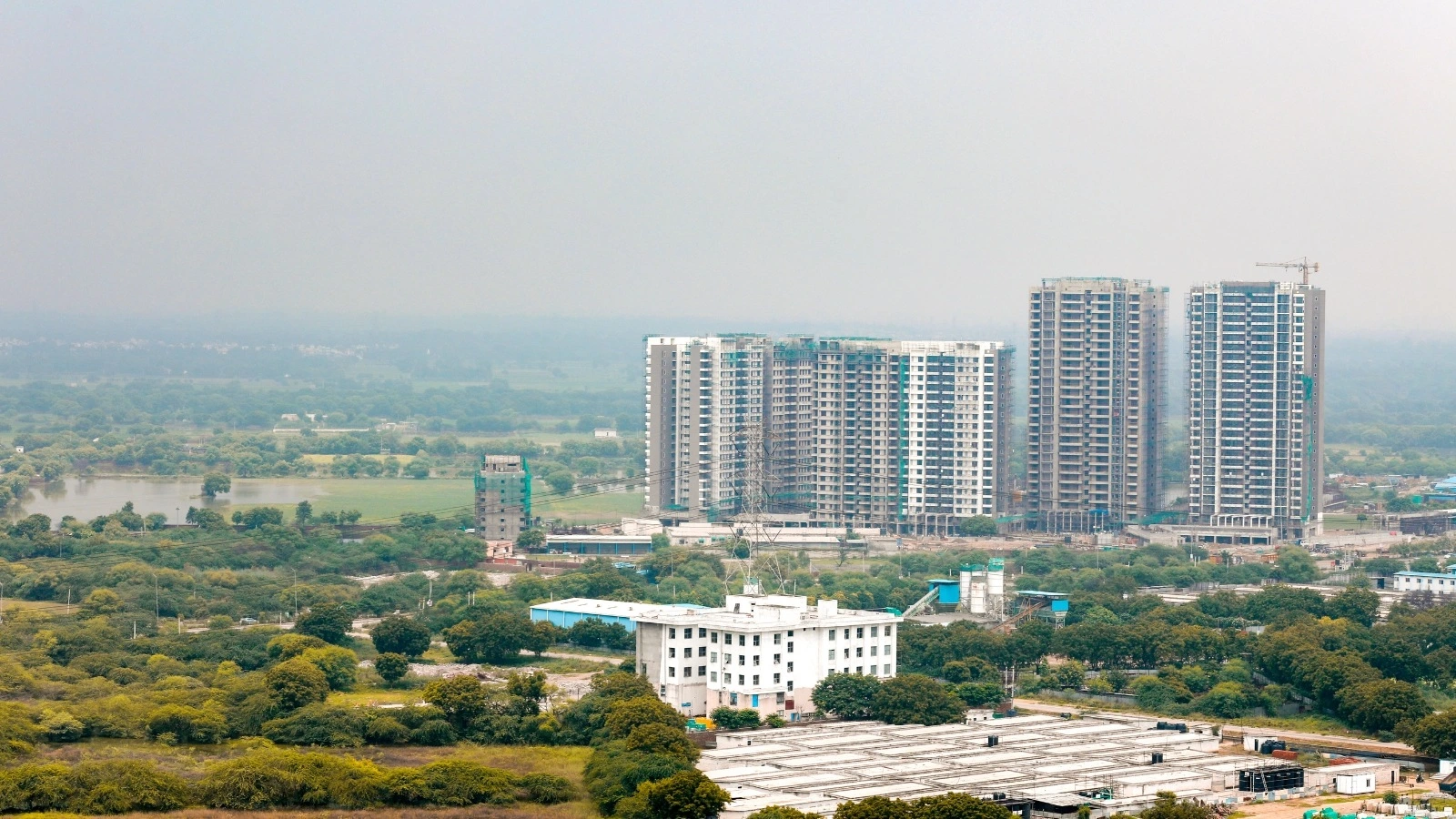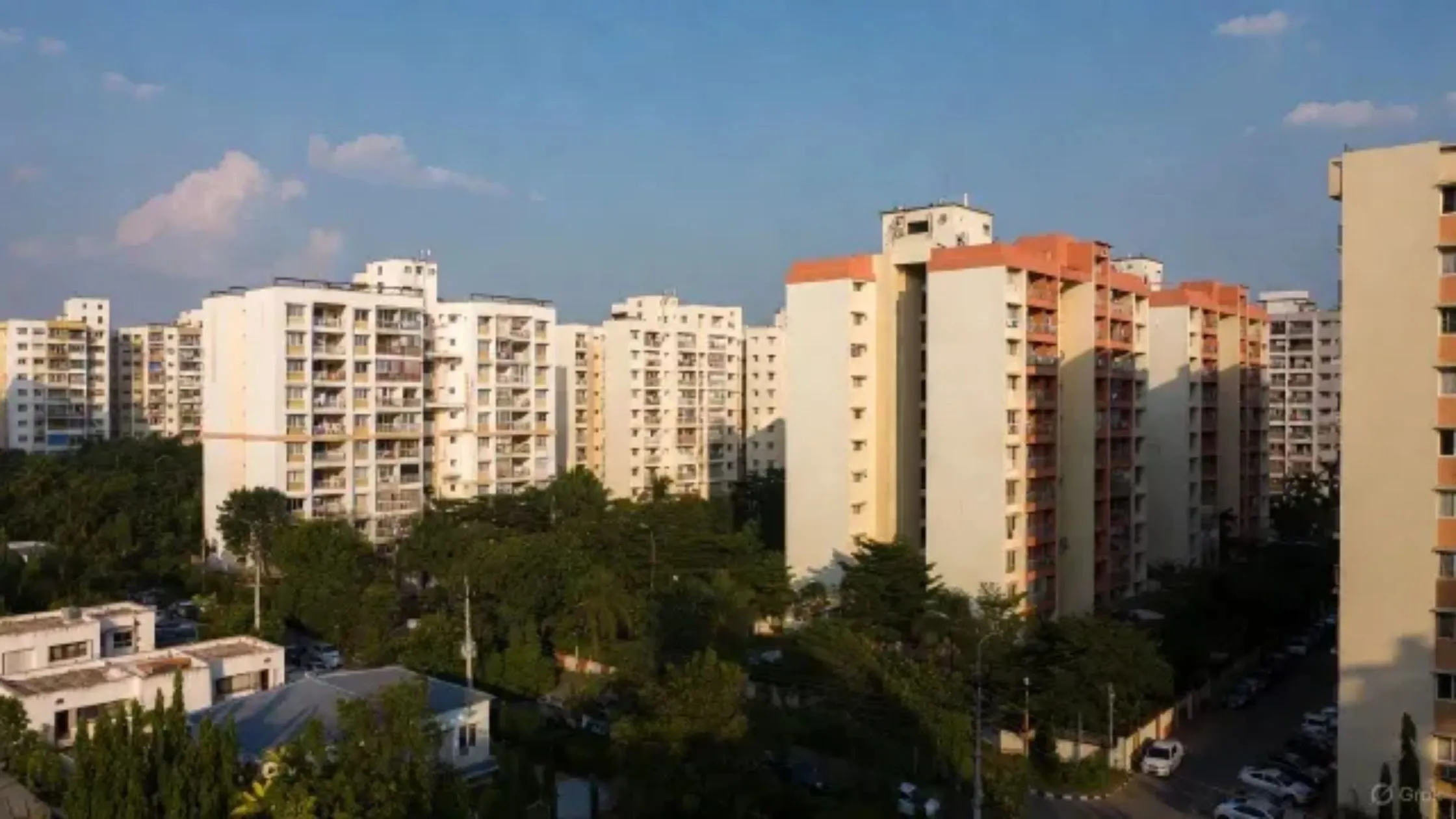Table of Content
The NH 163 Highway is a critical transport link connecting the states of Telangana and Chhattisgarh, serving as a vital corridor for commerce, trade, and passenger travel. Stretching across diverse terrains, this highway not only facilitates the seamless movement of goods and people but also supports regional development and industrial growth. Under the ambit of the Bharatmala Project, the National Highways Authority of India (NHAI) is spearheading expansion and modernization plans for NH 163 Highway, ensuring safer, faster, and more efficient connectivity across the region.
Overview of NH 163 Highway
The NH 163 Highway covers approximately 474 km, connecting key cities and towns such as Hyderabad, Warangal, Mulugu, Bhupalpally, Mancherial, and Bhopalpatnam. The highway passes through Telangana and Chhattisgarh, linking urban centers with rural and semi-urban regions. Currently designed as a 6-lane divided carriageway, NH 163 Highway is undergoing expansion to accommodate increasing traffic volumes and improve safety. By connecting major cities, industrial hubs, and tourist destinations, it plays a pivotal role in economic growth and regional development.
Entry and Exit Points
NH 163 Highway features multiple strategic entry and exit points that facilitate smooth regional connectivity:
Telangana:
- Hyderabad: Entry via NH-44/NH-65 junctions (Kukatpally/Gachibowli).
- Ghatkesar: Access to local roads connecting Medchal district.
- Bhongir: Junction to Yadadri Temple and bypass roads.
- Jangaon: Entry to regional district roads.
- Warangal: Connects NH-563 and inner city roads.
- Mulugu: Local entry for town and forest belt.
- Bhupalpally: Access to nearby villages and mining regions.
- Eturunagaram: Minor entry to tribal and forest areas.
- Mancherial: Entry connecting NH-63 and coal belt roads.
Chhattisgarh:
- Bhopalpatnam: Exit connecting NH-30 and onward routes.
These entry and exit points not only enhance regional mobility but also connect NH 163 Highway with major national highways, facilitating interstate travel and trade.
Also Read: Delhi-Dehradun Expressway: Latest Updates, Route Map & Expected Opening
Route Map and Key Facts
The NH 163 Highway traverses a mix of urban, semi-urban, and forested areas, offering scenic views along the way. Key facts include:
- Length: 474 km
- Number of lanes: 6-lane divided carriageway
- Connecting states: Telangana and Chhattisgarh
- Ownership: National Highways Authority of India (NHAI)
- Expansion deadline: August 2024
The highway also provides access to important cultural and tourist sites such as the Yadagirigutta Temple, Warangal Fort, and Thousand Pillar Temple, making it a crucial route for both commerce and tourism.
Toll Charges on NH 163 Highway
NH 163 Highway has multiple toll plazas to support maintenance and infrastructure development. Key toll points include:
- Gudur Toll Plaza:
- Car/Jeep/Van: ₹120 (single), ₹180 (return), ₹4,040 (monthly)
- LCV: ₹185, ₹280, ₹6,195
- Bus/Truck: ₹375, ₹565, ₹12,570
- Komalla Toll Plaza:
- Car/Jeep/Van: ₹125, ₹190, ₹4,185
- LCV: ₹205, ₹305, ₹6,760
- Bus/Truck: ₹425, ₹635, ₹14,160
- Jawahar Nagar Toll Plaza:
- Car/Jeep/Van: ₹40, ₹65, ₹1,360
- LCV: ₹70, ₹100, ₹2,195
- Bus/Truck: ₹145, ₹215, ₹4,595
These tolls vary based on vehicle type and provide a sustainable revenue stream for highway maintenance and upgrades.
Speed Limits on NH 163 Highway
Safety on the NH 163 Highway is maintained through regulated speed limits:
- Plains: 80–100 kmph along paved shoulders
- Curves: 40 kmph
- Hills: 40 kmph
- Towns: 40 kmph (uncongested), 30 kmph (congested)
The speed regulations, along with proper signage and traffic management, ensure safer driving conditions across all terrains.
Connectivity Benefits of NH 163 Highway
The NH 163 Highway provides multiple connectivity benefits:
- Economic Growth: Facilitates trade, commerce, and industrial activity along its corridor.
- Reduced Travel Time: Shortens the distance between key towns, benefiting commuters and tourists.
- Infrastructure Development: Supports flyovers, service roads, bridges, and urban-rural linkages.
- Tourism Promotion: Offers easier access to cultural and natural attractions, boosting regional tourism.
By linking remote areas with major urban centers, NH 163 Highway contributes to both economic and social development.
Construction Updates and Expansion Projects
The highway is undergoing significant expansion under NHAI’s guidance:
- Six-lane expansion: Hyderabad-Bhopalpatnam section, budgeted at INR 1,000 crore.
- Two-lane widening: Mulugu district, connecting Bogatha Waterfalls and Laknavaram Lake, enhancing tourism and interstate connectivity.
- Bridge construction: New bridges over the Godavari River to improve connectivity between Telangana and Chhattisgarh.
- Other upgrades: Four-lane road development along Hyderabad-Chevella-Bijapur to accommodate growing traffic.
These projects aim to reduce congestion, improve safety, and enable faster travel across the region.
Also Read: Nagpur-Vijayawada Expressway: Facts, Advantages, and Real Estate Opportunities
Impact on Real Estate and Development
The NH 163 Highway is poised to transform real estate and regional development:
- Property Appreciation: Residential and commercial land near NH 163 Highway is gaining value due to improved connectivity.
- Industrial Growth: The highway attracts industrial investment along its corridor.
- Hospitality and Tourism Boost: Hotels, resorts, and eateries benefit from increased tourist inflow.
- Job Creation: Infrastructure and commercial development generate employment opportunities, strengthening the local economy.
Overall, the highway serves as a catalyst for holistic regional growth and urbanisation.
Conclusion
The NH 163 Highway is more than just a road; it is a lifeline connecting Telangana and Chhattisgarh, supporting commerce, travel, tourism, and regional development. Its expansion under the Bharatmala Project will enhance safety, reduce travel time, and unlock economic potential. With improved connectivity, property values, industrial growth, and tourism are expected to rise along the corridor. As NH 163 Highway continues to develop, it will play a pivotal role in shaping the economic landscape and urbanisation of the region.








Ans 1. NH 163 Highway is a key national highway connecting Telangana and Chhattisgarh. It serves as an important corridor for commerce, trade, passenger travel, and regional development.
Ans 2. The highway stretches approximately 474 kilometers, linking major cities and towns including Hyderabad, Warangal, Mulugu, Bhupalpally, Mancherial, and Bhopalpatnam.
Ans 3. In Telangana, entry and exit points include Hyderabad, Ghatkesar, Bhongir, Jangaon, Warangal, Mulugu, Bhupalpally, Eturunagaram, and Mancherial. In Chhattisgarh, the highway connects to Bhopalpatnam and onward routes. These points enhance connectivity between urban and rural areas.
Ans 4. NH 163 is currently a 6-lane divided carriageway, designed to accommodate increasing traffic. Expansion and modernization are underway to further improve traffic flow and safety.
Ans 5. Yes, multiple toll plazas exist, including Gudur, Komalla, and Jawahar Nagar, with charges varying based on vehicle type. Tolls contribute to highway maintenance and infrastructure upgrades.
Ans 6. Speed limits vary depending on terrain and location. In plains, speeds range from 80–100 kmph, while curves and hilly areas are limited to 40 kmph. Within towns, limits are 40 kmph in uncongested areas and 30 kmph in congested zones.
Ans 7. The highway reduces travel time, facilitates trade and commerce, promotes tourism, and supports industrial and urban-rural linkages. It improves accessibility to major cities, cultural landmarks, and tourist destinations along its corridor.
Ans 8. Key projects include six-lane widening from Hyderabad to Bhopalpatnam, two-lane widening in Mulugu district, construction of new bridges over the Godavari River, and four-lane upgrades along Hyderabad-Chevella-Bijapur to handle increasing traffic.
Ans 9. Improved connectivity has led to property appreciation, industrial growth, development of hospitality and tourism, and increased employment opportunities. The highway acts as a catalyst for urbanisation and regional economic development.
Ans 10. The highway expansion, including six-lane upgrades and infrastructure improvements, is targeted for completion under the Bharatmala Project by August 2024.